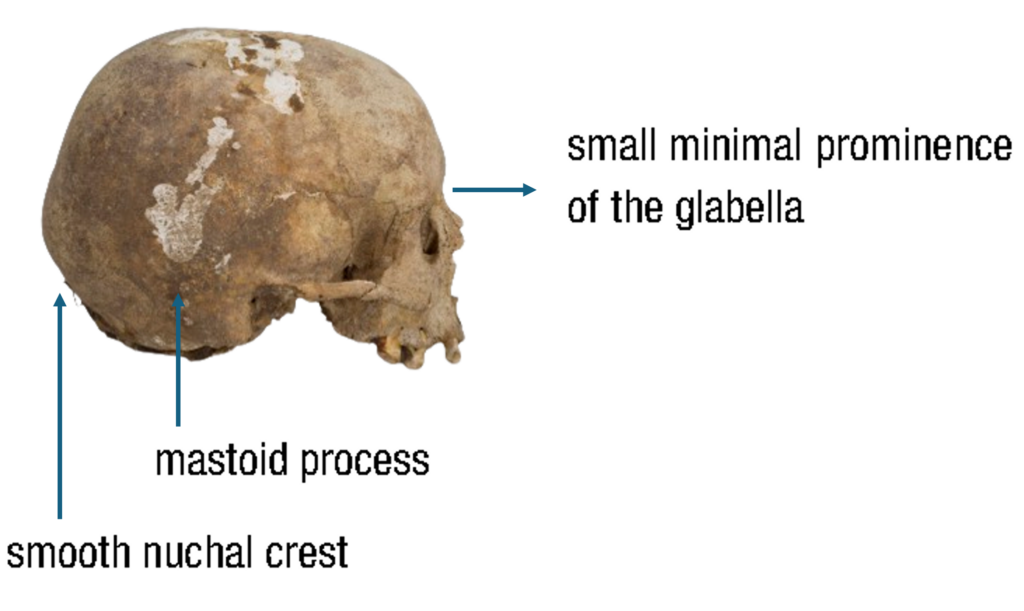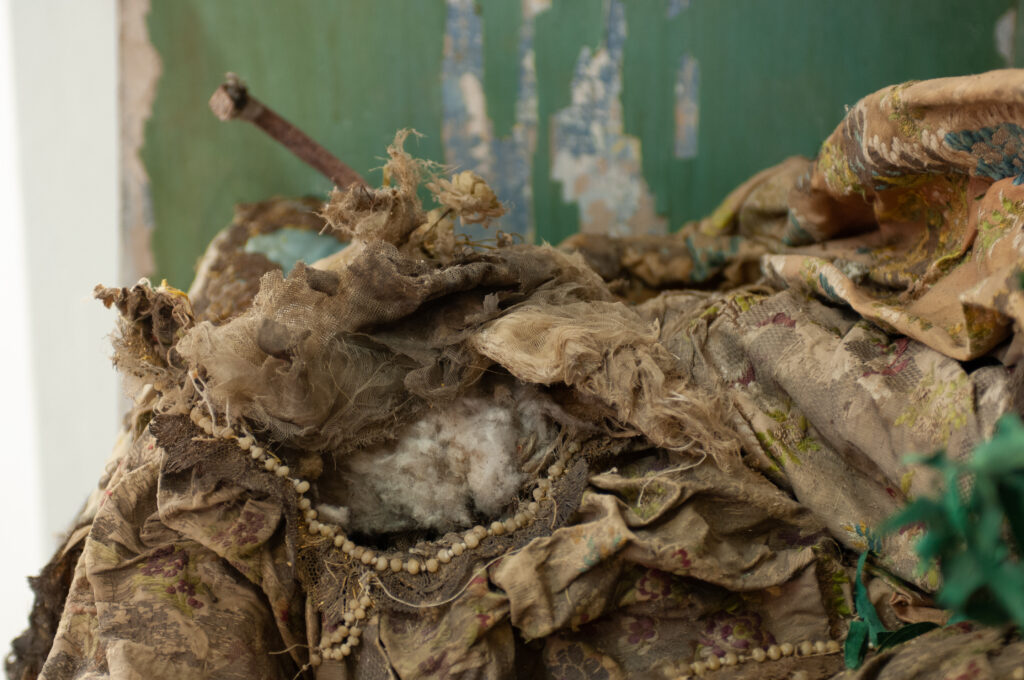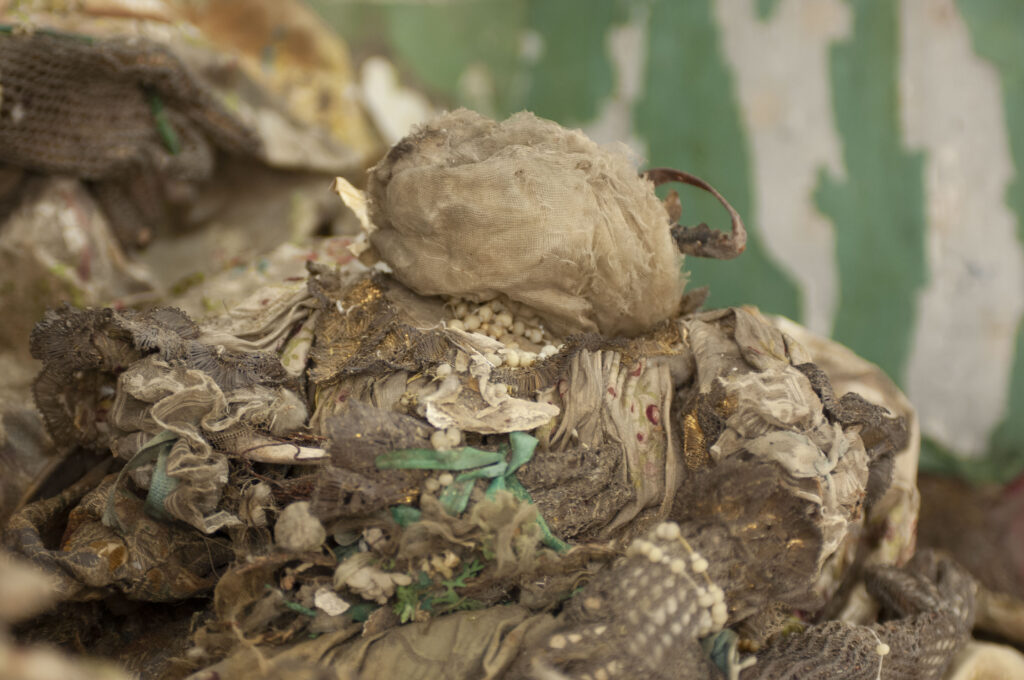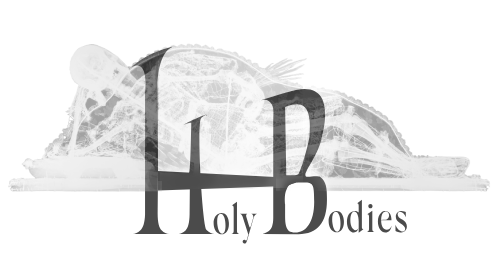St Clementina & St Simplício
The set features two simulacra, likely a mother and her child, housed within a polychrome wooden urn. The depiction of St Clementina is shown lying on her right side, cradling the child on her right arm, both facing each other with the head resting against her hand. They exhibit a delicate state of conservation, with multiple bones visible. The palm leaf and flower crown are also visible, though deformed and scattered. The entire set is decorated with various colourful fabrics, featuring floral designs embroidered with polychrome threads, gold and silver metallic leaf and wire, and finished with gold and silver braided trimmings in various shapes and sizes. The hands are dressed in silver metallic gloves. Decorative elements such as bracelets and necklaces made of pearl and bead strings, as well as sequins, are also visible.

The osteological study showed significant info:
St Clementina cranium shows adult female features. This corpo santo does not presented signs of physiological stress such as cribra cranii, cribra orbitalia or enamel hypoplasia.

Furthermore, fused mandible bones and the deciduous canines about to erupt indicate that St Simplício died between 1 and 1.5 years old.
Radiocarbon dating analysis
The bone fragment from St Clementina was radiocarbon dated to approximately the 3rd century AD, while the fragment from St Simplício dates to around the late 3rd or early 4th century AD.
Simulacra assemblage
St Clementina’s cranium was loosely positioned, with cotton visible filling the gap between the neck and the skull (see image on the left). In the case of St Simplício (image on the right), the face’s stratigraphy included an inner layer of paper. Overlapping this layer, various textile fabrics, such as glued cotton were observed. Finally, numerous layers of silk-covering gauze with adhesive shaped the contours of the face.


